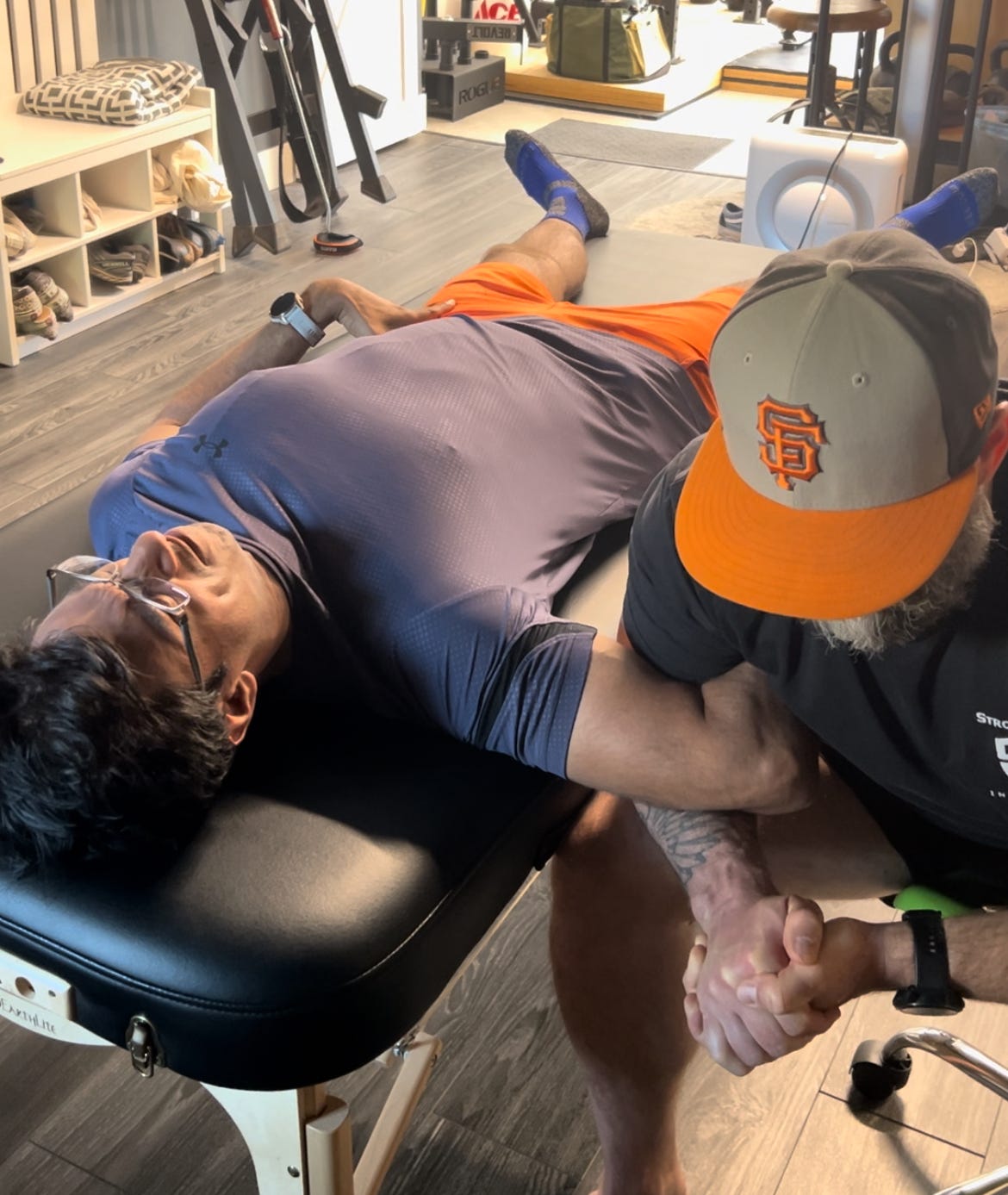Leveraging Compensations to Our Advantage: Compensatory patterns can be a great treatment and training strategy.
If we have ever worked together in any capacity, you know I love using common compensations and relative joint motions as a treatment and training strategy.
The word compensation typically has a negative connotation attached to it, but in reality, it’s a natural phenomenon that can be quite useful in a clinical setting.
For example, a common compensation I see regularly when assessing a person’s shoulder joint in internal rotation is scapular elevation and protraction. If the shoulder is particularly dysfunctional, the thoracic spine may flex as well.
Compensations are behavioral responses and occur as a result of various feedback loops. Case in point, if a joint runs out of joint space but needs more, one or more joint systems will move as a compensation to try and achieve said task.
Current Approaches
Most practitioners symptomize compensations and try to treat them directly by using “corrective exercises.” I’ve also observed therapists and coaches using verbal and external cues to try and manage a person’s natural tendencies to compensate, leading to the client still compensating and the practitioner just switching the exercises until they find one that doesn’t result in compensation, without addressing the actual root causes of the compensation.
A simple solution to symptomizing compensations and curating exercises around them is to leverage the compensation and use them as a training mechanism.
Case Study Example

In a recent case, my client’s shoulder assessment revealed a lack of joint workspace in the zone of internal rotation. As a result, the shoulder blade elevated and protracted when his humerus (arm bone) hit the end of its relative motion to the glenoid (scapula).
Rather than aimlessly give him exercises or prescribe “corrective exercises” I think might help alleviate his compensations, I recognize this is a natural behavior. Thus, I want to change that behavior by teaching his nervous system that he has control of each of the bones relative to one another. After all, a joint is two bones that articulate relative to each other.
First, we learn to use the humerus relative to the scapula from the zone of internal rotation and where the compensation occurs. Then, I teach him to retract and depress the scapula from the same zone of internal rotation. This approach will simultaneously divorce the joint systems from one another and decrease the amount of compensation, lending new tissue and architecture for the nervous system to use and gain information from (information flow). In other words, since his joint can now actually access the joint and capsular space in internal rotation, compared to before, we can now create afferent and efferent information exchange from these new lines of tissue.
As a practitioner, I use positional isometrics for both the humerus relative to the scapula and the scapula relative to the humerus. I have him perform external rotation against an immovable object (me). The trick to successfully using the scapular joint effectively when doing positional isometrics is to also externally rotate. Fun fact: scapular depression and thoracic extension are also common compensations for the shoulder joint in external rotation.
Following treatment, the client then must have a logical and coherent training program to reinforce these results. This will allow the nervous system to prune the old behavior and have new self-organizational pathways, i.e., new behaviors over time.

Key Learnings
We can use positional isometrics to divorce the scapulothoracic joint from the glenohumeral joint while simultaneously teaching the nervous system that we have two joint systems and, further still, that we have control over each.
To Conclude
Compensations unveil a leverage point in client care in a clinical setting. We can treat joint dysfunction by training the true nature of a joint and training new behaviors. Further, we can create training programs that specifically train these very same capacities rather than doing exercises that aim to avoid compensation.
I encourage you to play around with the compensations as a training and treatment strategy, either on yourself or with a client-patient.
Let us know in the comments what you find.
Sign up and get a FREE video workout!
Plus get our free monthly video blog on accessing what you love most - your body and optimizing your joint health!


